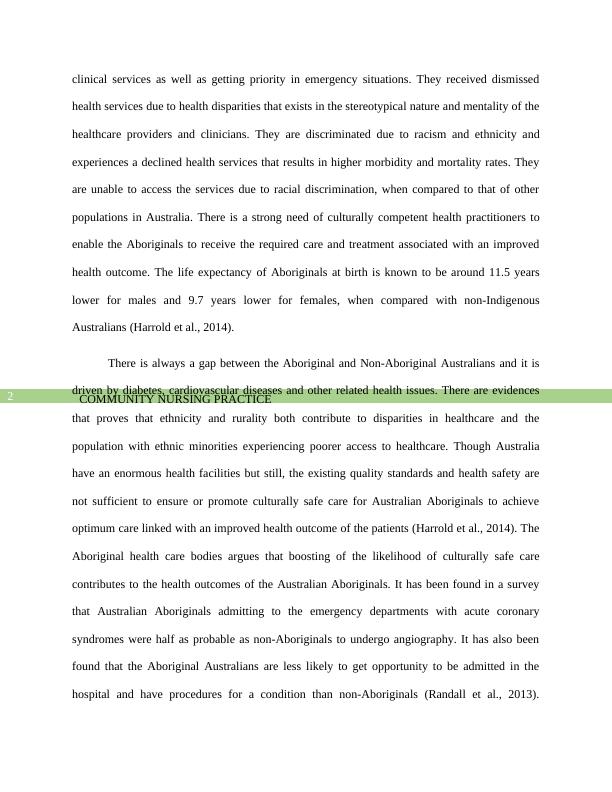Health Disparities and Cultural Competent Care for Australian Aboriginals
This research article discusses the nurse practitioner-led approach to the management of chronic kidney disease in an Aboriginal population.
9 Pages2384 Words74 Views
Added on 2022-11-03
About This Document
This article discusses the health disparities faced by Australian Aboriginals due to racism and ethnicity and the need for culturally competent care to improve their health outcomes. It also highlights the importance of patient-centered care and evidence-based practice in delivering quality care to the patients.
Health Disparities and Cultural Competent Care for Australian Aboriginals
This research article discusses the nurse practitioner-led approach to the management of chronic kidney disease in an Aboriginal population.
Added on 2022-11-03
ShareRelated Documents
End of preview
Want to access all the pages? Upload your documents or become a member.
Assignment On Health Disparities Of Aboriginal Report
|12
|2760
|16
Racism in Australian Healthcare: A Nurse's Perspective
|7
|1601
|276
Nursing Assignment on Impact of Interpersonal Behavior
|5
|734
|54
Paper on Health of Indigenous and Non-indigenous Australians
|8
|2422
|59
Meeting the Health Needs of Aboriginals: Advocacy, Community Engagement, and Nursing Practice
|9
|2189
|284
Influence of Racism Report
|4
|755
|45



